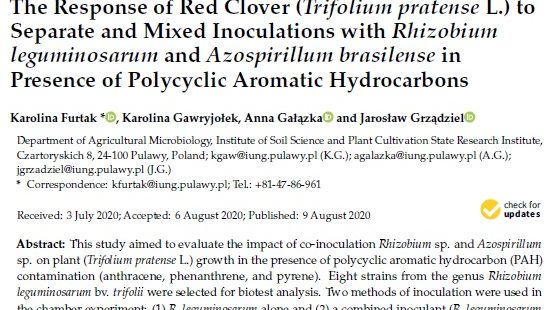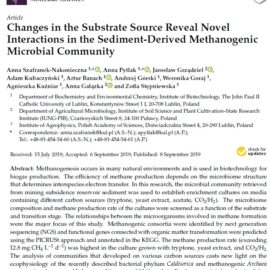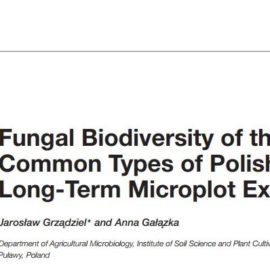Furtak K., Gawryjołek K., Gałązka A., Grządziel J. (2020): The Response of Red Clover (Trifolium pratense L.) to Separate and Mixed Inoculations with Rhizobium leguminosarum and Azospirillum brasilense in Presence of Polycyclic Aromatic Hydrocarbons. International Journal of Environmental Research and Public Health, 17(16), 5751 (70 pkt. MNiSW, IF = 2.849)
DOI: https://doi.org/10.3390/ijerph17165751
Abstract
This study aimed to evaluate the impact of co-inoculation Rhizobium sp. and Azospirillum sp. on plant (Trifolium pratense L.) growth in the presence of polycyclic aromatic hydrocarbon (PAH) contamination (anthracene, phenanthrene, and pyrene). Eight strains from the genus Rhizobium leguminosarum bv. trifolii were selected for biotest analysis. Two methods of inoculation were used in the chamber experiment: (1) R. leguminosarum alone and (2) a combined inoculant (R. leguminosarum and Azospirillum brasilense). For comparison, non-contaminated controls were also used. The results demonstrated that co-inoculation of plants with Rhizobium and Azospirillum resulted in more root and shoot biomass than in plants inoculated with R. leguminosarum alone. The results indicated that application of a co-inoculation of bacteria from Rhizobium and Azospirillum species had a positive effect on clover nodulation and growth under the condition of PAH contamination.



